The British Air Defence System
Britain was defended by an extremely complex but efficient command and control system. Some knowledge of this helps with the overall understanding of York's Baedeker Raid.
The principles:
Britain was defended by a series of Chain Home RDF Stations (the term radar did not come into being until 1943). Initially, they covered the area between Southampton and the Tyne but, during the course of the war, this was extended.
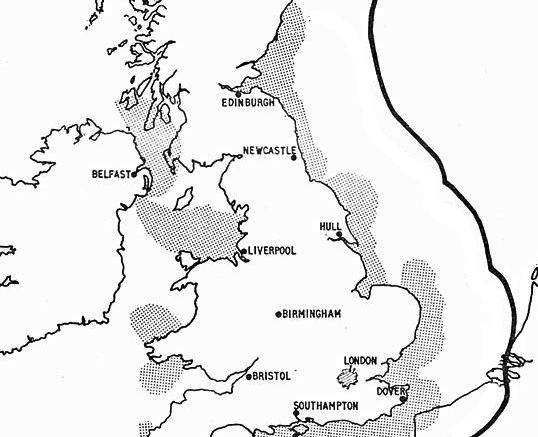
The dark line shows the approximate range of the original Chain Home RDF stations.
The shaded areas are those covered by the Chain Home Low stations.......detection down to 500ft.
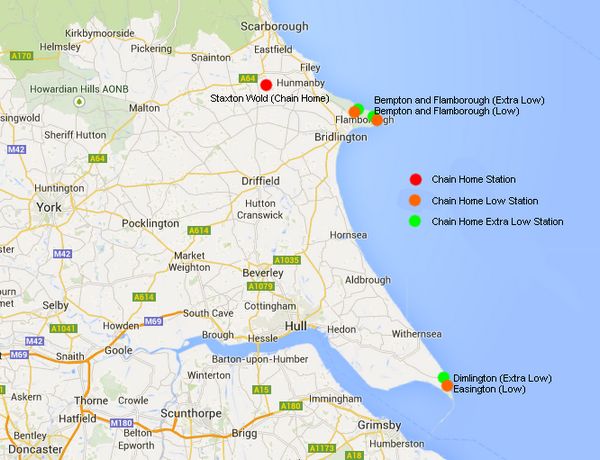
The location of the various Chain Home stations in the Yorkshire area.
Note: The initial Flamborough Head Chain Home Low (CHL) station was installed in early 1940 a few hundred feet from the lighthouse. At this location it was only 130ft above sea level which proved to be very unsatisfactory. A better site was found four miles up the coast at Bempton where the cliffs were 350ft high. In July 1940 this became RAF Bempton and, in 1941, became a Chair Home Low (CHL) & Chain Home Extra Low (CHEL) station.
CHEL stations could detect aircraft down to 50ft.
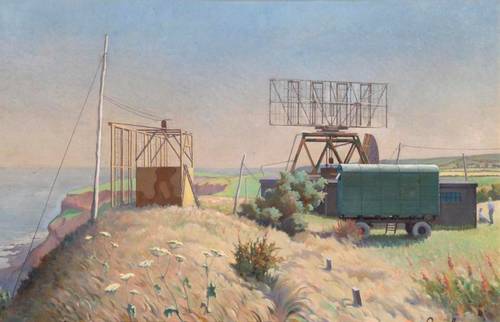
This painting by W T Rawlinson is © IWM (Art.IWM ART LD 5734)
The location is very similar to that of RAF Bempton.
The Chain Home stations could only look out to sea, so once enemy aircraft crossed the coast an increasing number of GCI radars and the Royal Observer Corp took over. A particularly important task was to estimate a more accurate height for the enemy aircraft.
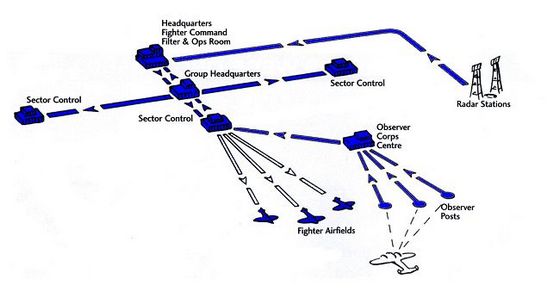
This diagram shows the flow of information which made the system very effective. Plots received from the RDF (Radar) stations were fed directly to Headquarters Fighter Command. Those received from the Royal Observer Corp were fed to the same location but via their own Observer Corp Centre and the appropriate Sector Control. The compilation of all this information enabled timely air raid warnings to be sounded and fighters to be scrambled from the most appropriate airfields.
For York's air raid, the Sector Control Stations involved were:
No:12 Group......RAF Kirton in Lindsey and RAF Coltishall.
No:13 Group..... RAF Catterick and RAF Church Fenton.
Ground Control Interception:
GCI radar stations were used for guiding night fighters onto attacking bombers and were developed from 1940 onwards. GCI stations came in three forms of development.
- Mobile
- Intermediate Transportable
- Final
In April 1942 there were 28 GCI stations in the UK.........but no 'Final' stations were in operation.
For details of the differences between the systems follow this link.
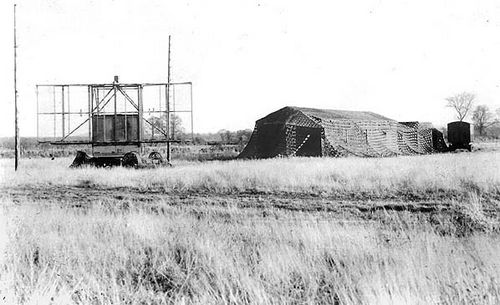
An Intermediate Transportable GCI station. There would be a duplicate installation nearby.
One was the transmitter and the other the receiver (photo credit: Subterranea Britannica)
At the time of the Baedeker Raids there were six GCI stations in the area of operations and they were all either Mobile or Intermediate Transportable.
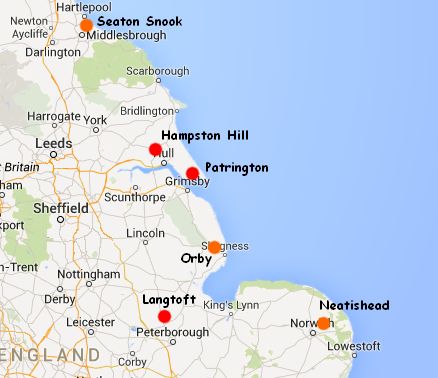
Seaton Snook, Orby and Neatishead were 'mobile' stations.
Hampston Hill, Patrington and Langtoft were 'intermediate transportable' stations.
The effective range of each station depended on the height of the enemy aircraft.

The chart shows how the range increases with height.
The following maps shows how the coverage of the east coast very much depended on the height of the raiding aircraft.
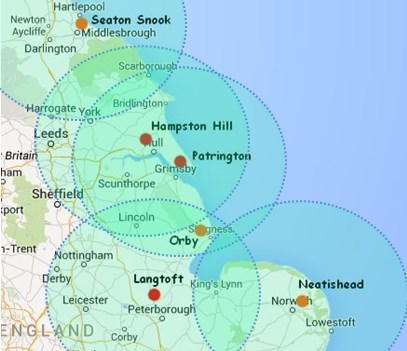
Combat reports describe the raiders as flying at approximately 6,000ft.
At this height the six stations have good coverage.
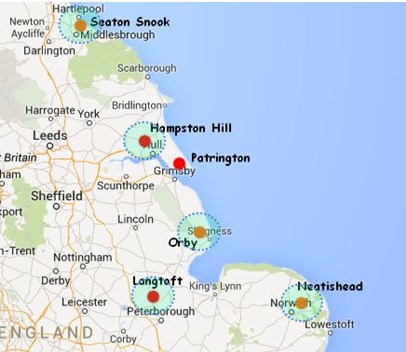
If the enemy aircraft could get down to around 500ft then the coverage is quite different.
Even with the introduction of GCI radars, the Observer Corps still had an important job to do.
Observer Corp Posts:
These took many forms. Some were set up next to a wooden shed, some were sandbag emplacements in the open ground and others were on the roofs of prominent buildings.
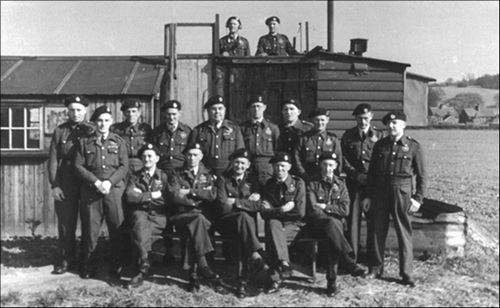
(photo credit: The Walkern History Society)
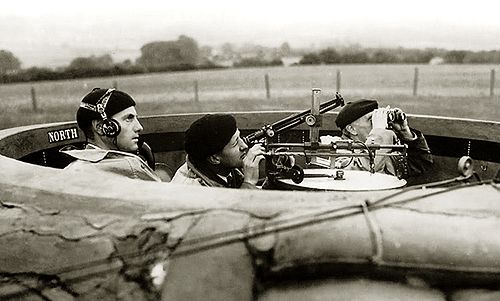
(photo credit: Imperial War Museum)
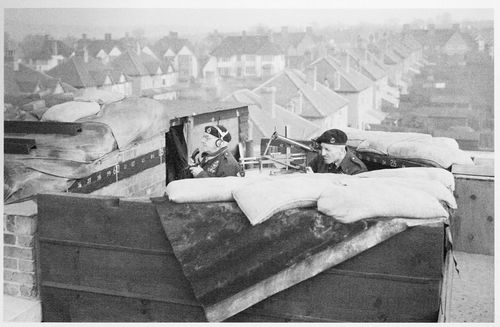
(photo credit: unknown)
Observer Corps Centres:
The information received from the Observer Posts was sent to their Observer Corp Centre. These centres were responsible for and controlled between 30 and 40 Observation Posts, each of which would be some 15 to 20 miles apart (24-32km) .
In the East Yorkshire area (of the York Sector) there were 38 such sites.
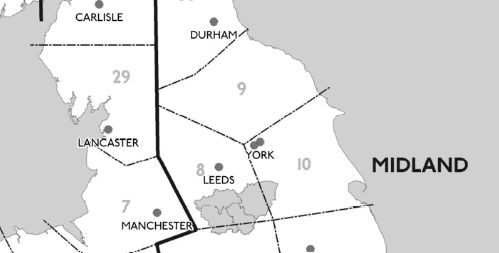
The map shows the 'Yorkshire' area divided into three parts. The Leeds Sector (8 Group), the Catterick Sector (9 Group) and the York Sector (10 Group). The Observer Corp Centre for York Sector (10 Group) was located behind the Lendal Street Post Office in a former sorting shed.
Each Centre had a variety of displays which gave the fullest picture possible of activity in their area.
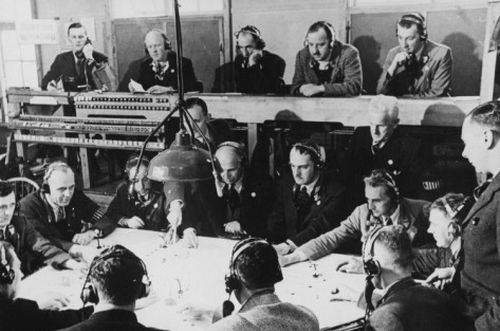
(photo credit: Imperial War Museum)
On the balcony overlooking the plotting table are "Tellers". Their job was to view the overall situation and pass this information to neighbouring ROC Centres and Fighter Command Sector controls (with onwards transmission to Fighter Command HQ).
Fighter Command Headquarters:
This was based at RAF Bentley Priory near Stanmore in Middlesex.
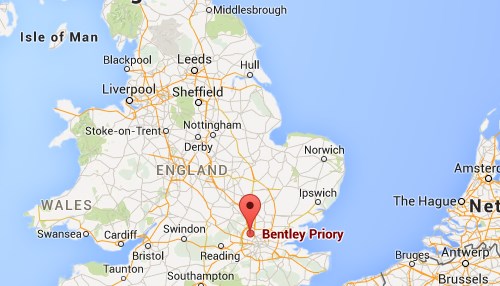
Information on incoming German attacks received from the Royal Observer Corps and radar stations was sent to Bentley Priory. The commanders there decided which fighter Sector Stations should be alerted and where air raid warnings should be sounded.
In 1941 efforts were made to try and reduce the number of false alerts ordered. The Fighter Command staff felt their responsibilities most keenly and were very conscious of trying to make the correct decision. In the end however, it was decided to leave the system as it was.
Click this link to read a letter from Sir Hugh Dowding.
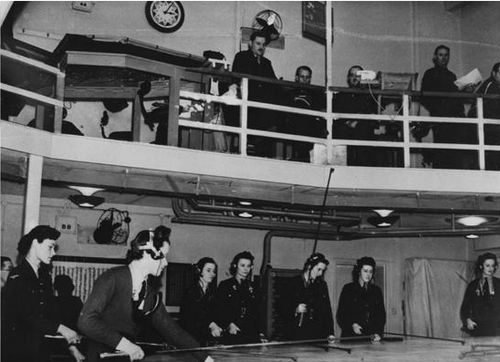
The main Fighter Command Operations room at Bentley Priory. Controllers monitor the plotting table (updated by WAAFs) showing the progress of raids. This large horizontal map also showed the boundaries of the "Warning Districts".
(photo credit: Imperial War Museum)
All Air Raid Warnings were issued by this Operations Room.
The Air Raid Warning System:
By September 1940 the country was divided into 119 Warning Districts. These districts were based on "Telephone Areas" and cut across county boundaries.
Each "Warning District" compiled a "Warning List". These contained the telephone numbers of organisations who were to receive air-raid warnings. A warning passed through a lengthy chain from Bentley Priory to the individual recipients. Once the message, sent using dedicated lines, reached the Main Distributing Centres (MDC) in London, Liverpool or Glasgow, the entire warning chain was in the hands of GPO telephone operators.
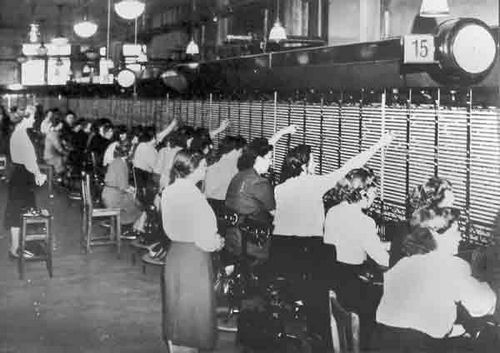
The GPO MDC in London (photo credit: unknown)
The London exchange was responsible for passing on warnings to 60 districts, Liverpool to 39 districts and Glasgow to the remaining 20 districts (the numbers vary slightly from report to report).
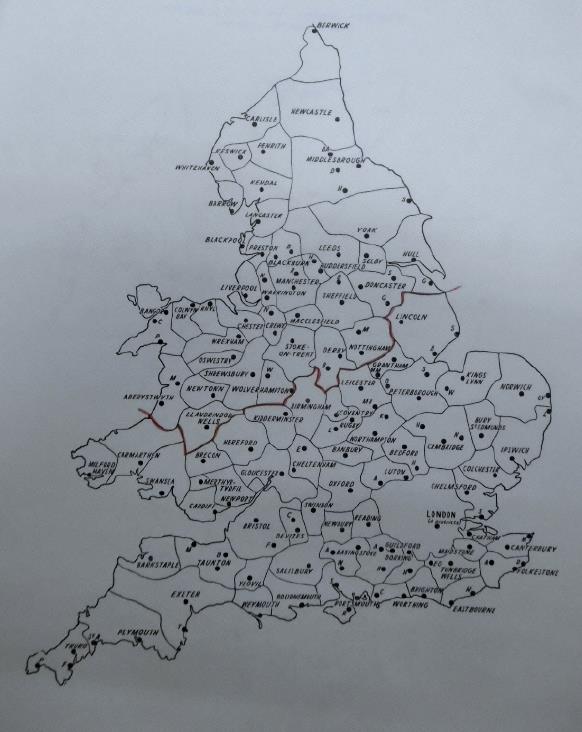
The warnings districts for England and Wales......click the link to view the Scottish districts.
Image copyright of the National Archives.
All organisations on the Warning Lists needed to answer their telephones within 15 seconds and to identify themselves immediately. Failure to do this was a serious offence, with immediate visits from the police and the threat of legal action.
Certain organisations on the Warning List were permitted to pass on 'caution' and 'all clear' messages to other locations using their own communication methods.
The Warnings:
- Raiding aircraft are approaching the UK.
- PRELIMINARY CAUTION.
- Air raid message - Yellow (but in the hours of darkness - Purple).
This message was only a preliminary warning and was confidential. It was not to be passed on from one warning district to another nor to be conveyed to the public.
- Raiding aircraft are heading towards certain districts which may be attacked within from five to ten minutes.
- ACTION WARNING.
- Air raid warning - Red.
This message is passed by telephone to certain authorities on the Warning List, who will sound the Air Raid Warning sirens.
- The threat has passed.
- CANCEL ALL WARNING MESSAGES.
- Air raid message - White.
This message was confidential. It was to be passed on only to those who received the CAUTION and WARNING messages.
The Signals:
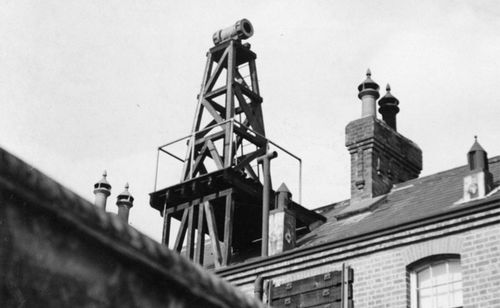
A WW2 siren mounted in a strategic location (photo credit: Merton Memories)
- On receipt of ACTION WARNING the air raid warning would sound.
- A signal of two minutes duration. The most common being a continuous note, rising and falling in pitch, the time taken from rise to rise being from two to five seconds.
- On receipt of RAIDERS PASSED the 'All Clear" would sound.
- A continuous signal of two minutes duration at a steady pitch.